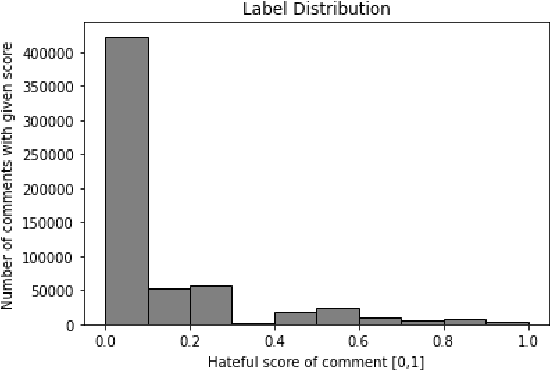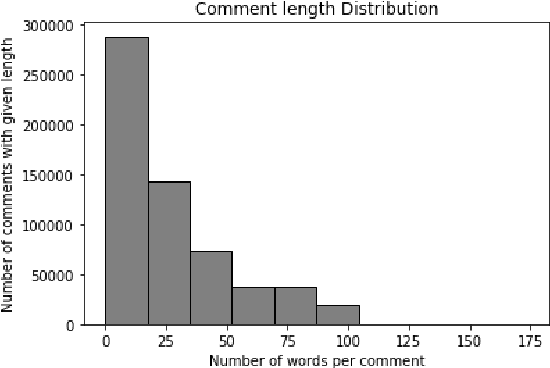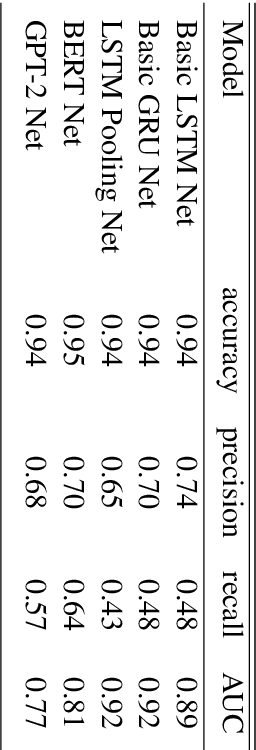Aygul Zagidullina
Model Bias in NLP -- Application to Hate Speech Classification using transfer learning techniques
Oct 11, 2021



Abstract:In this paper, a BERT based neural network model is applied to the JIGSAW data set in order to create a model identifying hateful and toxic comments (strictly seperated from offensive language) in online social platforms (English language), in this case Twitter. Three other neural network architectures and a GPT-2 model are also applied on the provided data set in order to compare these different models. The trained BERT model is then applied on two different data sets to evaluate its generalisation power, namely on another Twitter data set and the data set HASOC 2019 which includes Twitter and also Facebook comments; we focus on the English HASOC 2019 data. In addition, it can be shown that by fine-tuning the trained BERT model on these two data sets by applying different transfer learning scenarios via retraining partial or all layers the predictive scores improve compared to simply applying the model pre-trained on the JIGSAW data set. With our results, we get precisions from 64% to around 90% while still achieving acceptable recall values of at least lower 60s%, proving that BERT is suitable for real use cases in social platforms.
 Add to Chrome
Add to Chrome Add to Firefox
Add to Firefox Add to Edge
Add to Edge